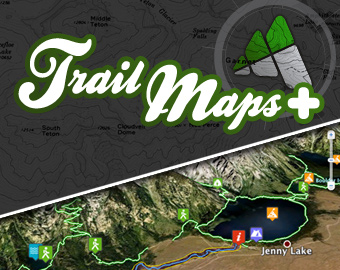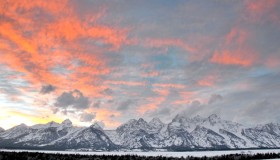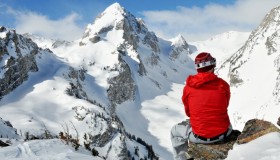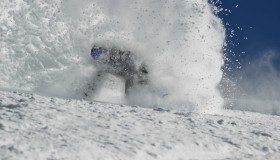Hundred Days
06/08/11

Pine Cones: Morel Arch Nemesis
Circling fallen trees, I stalked the forest like an Osprey over water. A creek rushing in the distance broke the powerful silence. Rain from the night prior left the deciduous floor damp to the touch. “Perfect”, I thought, training my sight towards the ground. Summonsing ancient scavenger instincts buried deep within the genome, I hunted, for Morel mushrooms. Before discouragement set it, my eyes turned, and there it was. Smiling at the find, I shuffled over, scissors in hand, reached down and, “What!? Oh man.. Damn Pine Cone.” Identical in size, color and profile, Morels and Pine Cones inhabit the same environment, but differ greatly in texture, taste and value. Not thwarted by the emotional roller coaster dealt from pine cone after pine cone, I continued hunting. Finally, glimmering in the morning light, nestled between an opening in the trees, stood the prized Morel.
An hour of wandering through Aspens & Cottonwoods yielded a bounty of one Morel mushroom. Doesn’t sound like mission accomplished. In fact, the only saving grace is that an hour of wandering through Aspens & Cottonwoods yielded a peaceful state of mind ready to attack the day. Off in the distance, the mountains stood watch. Ever present and always there.
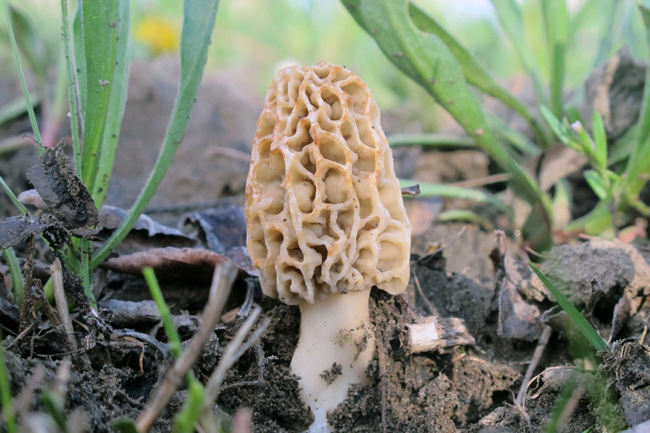
Photo: Kevin Wittig
Morels are more commonly found under deciduous trees rather near than conifers. Common trees in the northern hemisphere associated with Morels include ash, sycamore, tulip tree, dead and dying elms, cottonwoods and old apple trees. Black morels may grow abundantly in forests which have been burned by a forest fire. The reasoning for this phenomenon is still unknown, but is attributed to vast amount of decaying wood on the forest floor.
Tweet
!function(d,s,id){var js,fjs=d.getElementsByTagName(s);if(!d.getElementById(id)){js=d.createElement(s);js.id=id;js.src="//platform.twitter.com/widgets.js";fjs.parentNode.insertBefore(js,fjs);}}(document,"script","twitter-wjs");
03/10/14 - 2nd Annual Ski Joring Championships
Written and Photographed By: Stephen Williams
Ski Joring is an event with a perfect mix of Jackson Hole's historic cowboy culture and the new ski bum lifestyle. Presented by the Shriner's Club as a part of Jackson hole Winterfest, the skier lassos up the horse and rider and hangs ...
Read More
Tweet
!function(d,s,id){var js,fjs=d.getElementsByTagName(s);if(!d.getElementById(id)){js=d.createElement(s);js.id=id;js.src="//platform.twitter.com/widgets.js";fjs.parentNode.insertBefore(js,fjs);}}(document,"script","twitter-wjs");
02/19/14 - Competing in the Freeride World Qualifier Stop at Crystal Mountain
Written By: Rachel Fortier
Photos By: Paul Moseley
On about the 13th hour of my 15 hour drive I started to ask myself, “What’s the point of all this?” I am headed to Crystal Mountain, southeast of Seattle in the Cascades for my 1st Freeride ...
Read More
Tweet
!function(d,s,id){var js,fjs=d.getElementsByTagName(s);if(!d.getElementById(id)){js=d.createElement(s);js.id=id;js.src="//platform.twitter.com/widgets.js";fjs.parentNode.insertBefore(js,fjs);}}(document,"script","twitter-wjs");
02/16/14 - Road Tripping to Big Sky and Moonlight Basin
Written and Photographed By: Stephen Williams
When it comes to snowboarding, I have definitely become attached to the terrain around Jackson Hole. A couple days a season at Grand Targhee Resort, a few dozen more in the backcountry of Teton Pass and Grand Teton National Park, ...
Read More
Tweet
!function(d,s,id){var js,fjs=d.getElementsByTagName(s);if(!d.getElementById(id)){js=d.createElement(s);js.id=id;js.src="//platform.twitter.com/widgets.js";fjs.parentNode.insertBefore(js,fjs);}}(document,"script","twitter-wjs");
01/29/14 - Bif-Pop-Burn, Coming Back From a Knee Injury
Written By: Adam Glos
For those reading who have experienced a knee injury, you know the realization that your ski season is over is far more painful than the injury itself. When your doc tells you your ACL is “missing” from your MRI, what he’s really saying ...
Read More
Tweet
!function(d,s,id){var js,fjs=d.getElementsByTagName(s);if(!d.getElementById(id)){js=d.createElement(s);js.id=id;js.src="//platform.twitter.com/widgets.js";fjs.parentNode.insertBefore(js,fjs);}}(document,"script","twitter-wjs");
01/24/14 - U.S. Snowboarding Grand Prix Olympic Qualifier at Mammoth Mountain
Written and Photographed By: Egan Gleason
So, I was sitting at home Thursday night editing photos when my friend John Deesel called to ask if I wanted to go to the U.S. Snowboarding Grand Prix Olympic Qualifier at Mammoth Mountain. I, of course, jumped on ...
Read More
Tweet
!function(d,s,id){var js,fjs=d.getElementsByTagName(s);if(!d.getElementById(id)){js=d.createElement(s);js.id=id;js.src="//platform.twitter.com/widgets.js";fjs.parentNode.insertBefore(js,fjs);}}(document,"script","twitter-wjs");
01/22/14 - The 2014 Coldsmoke Awards
Written By: Ellie Stratton-Brook
Photography By: Stephen Williams
Have you ever been asked why you choose to live in a town where the temperature rarely rises above 20 degrees for a full six months? Typically the answer is universal. The pull of winter sports and exploration in these gorgeous mountains is ...
Read More
Tweet
!function(d,s,id){var js,fjs=d.getElementsByTagName(s);if(!d.getElementById(id)){js=d.createElement(s);js.id=id;js.src="//platform.twitter.com/widgets.js";fjs.parentNode.insertBefore(js,fjs);}}(document,"script","twitter-wjs");
01/14/14 - Jackson Hole Storm in Photos
Photography and Writing By: Stephen Williams
A storm cycle that started last week dropped over 40 inches of new snow and put the total snowfall at Jackson Hole Mountain Resort over 18 feet for the season. Teton Village was in a powder frenzy as the tram line snaked its ...
Read More
Tweet
!function(d,s,id){var js,fjs=d.getElementsByTagName(s);if(!d.getElementById(id)){js=d.createElement(s);js.id=id;js.src="//platform.twitter.com/widgets.js";fjs.parentNode.insertBefore(js,fjs);}}(document,"script","twitter-wjs");
01/12/14 - Powder Day Frenzy in Jackson Hole
Written By: Ben Glatz
Powder flew as the jubilant crowd rushed towards the first box in a powder induced frenzy. Fresh lines of storm dropped and wind loaded snow awaited the crowds who were soon to be at 10,000 plus feet above the calm sea. Hoards of people ...
Read More
Tweet
!function(d,s,id){var js,fjs=d.getElementsByTagName(s);if(!d.getElementById(id)){js=d.createElement(s);js.id=id;js.src="//platform.twitter.com/widgets.js";fjs.parentNode.insertBefore(js,fjs);}}(document,"script","twitter-wjs");
12/17/13 - RFID and What It Means to You
Written By: Heather Cosby
By now, you’ve probably either heard about or passed through one of the new RFID gates at the Jackson Hole Mountain Resort. RFID, or Radio Frequency Identification isn’t a new technology. It’s been around since the ‘70’s and is used to track library ...
Read More
Tweet
!function(d,s,id){var js,fjs=d.getElementsByTagName(s);if(!d.getElementById(id)){js=d.createElement(s);js.id=id;js.src="//platform.twitter.com/widgets.js";fjs.parentNode.insertBefore(js,fjs);}}(document,"script","twitter-wjs");
12/13/13 - The Messengers: A Much Needed Dream Boost
Written By: Ellie Stratton-Brook
Photos By: Oliver Hollis
The show will always go on, especially if Amy Ringholz has anything to do with it. Providing art scholarships for local high school students, creating riveting and unique artwork, inspiring others—these are a few of her favorite things. Hailing from ...
Read More
12/09/13: Split Decision
Photos and Writing by: Ben Glatz
The almighty snow dance has been working here in Jackson as witnessed by the recent storm that left over two feet of fresh snow in most parts of the Tetons and Snake River Range. With new snow come new complications. So what do fresh powder, deep persistent weak ...
Read More
11/26/13: Opening Day at Grand Targhee Resort
Photos and Writing by: Heather Cosby
Let's Go Skiing
If I was going to write a song about the 2013-14 opening day at Grand Targhee Ski Resort, I’d include a verse about snow lingering on branches glistening in the sun, a line of cars making their way up to Fred’s Mountain, ...
Read More
11/14/13: Early Season Skiing in Jackson Hole
Photos by: Egan Gleason
Jackson Hole received a last of winter last week, and photographer Egan Gleason was chomping at the bit to get out and get some early season turns in the backcountry. Check out a few photos he took of some friends riding on Teton Pass, and make ...
Read More
09/09/13 - Sharing The #JacksonHole Experience
Written by: Kevin Wittig
Ranging from community events to natural beauty, the recent collection of images shared by Jackson Hole has been an incredible visual experience.
Gathered here are images representing moments captured in the Tetons and shared with the world on Instagram using the hashtag #jacksonhole. With so ...
Read More
08/14/13 - 26th Annual Targhee Bluegrass Festival
Written by: Ellie Stratton-Brook
Photos by: Christie Quinn and Harper Hollis
Continuing the 2013 Summer of Music, Grand Targhee Resort’s Targhee Bluegrass Festival brought in a relaxed vibe full of string instruments and acoustic jams. Upbeat in a different way than Targhee Fest, these bluegrass artists were constantly collaborating and rocking ...
Read More



